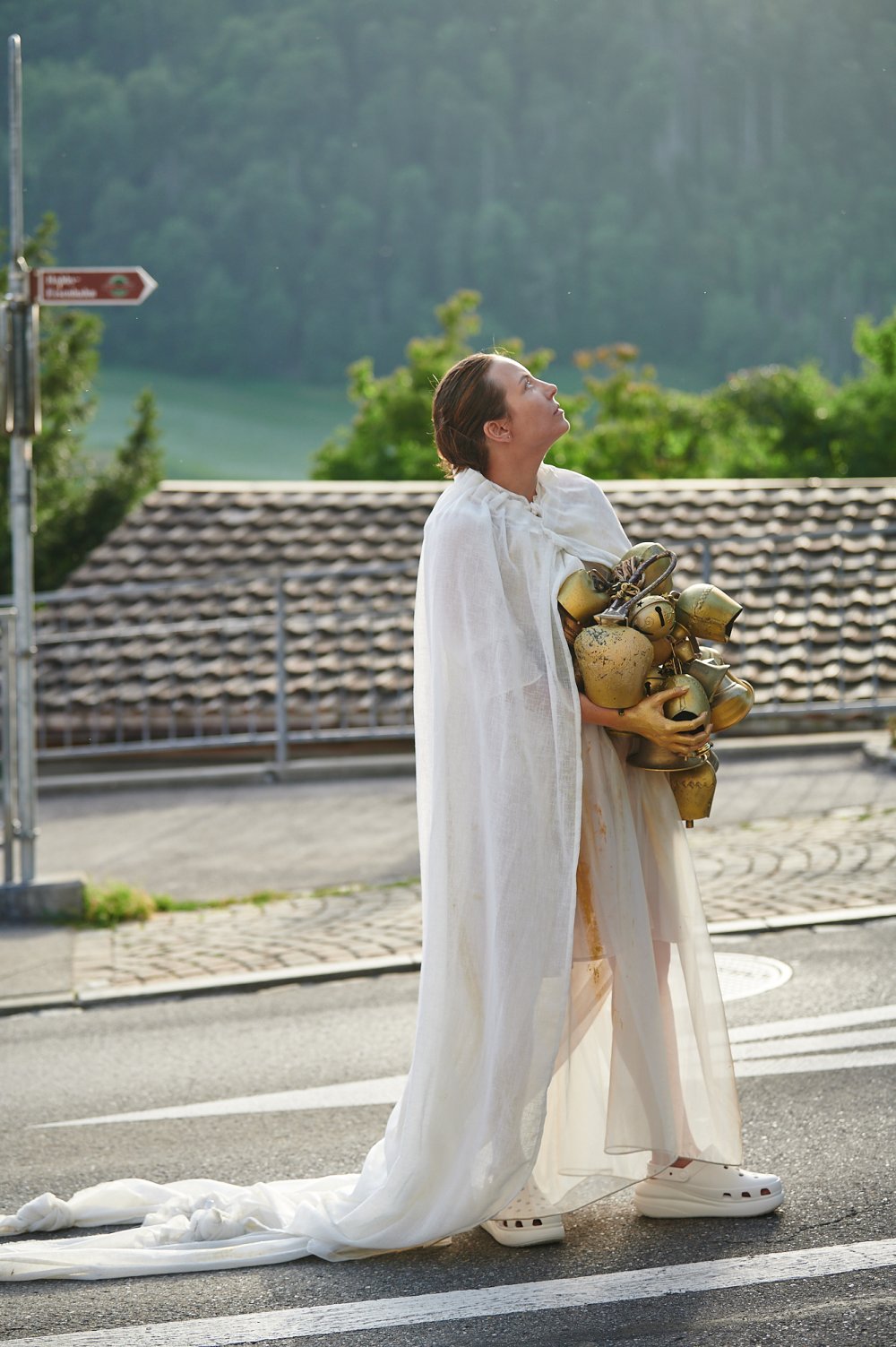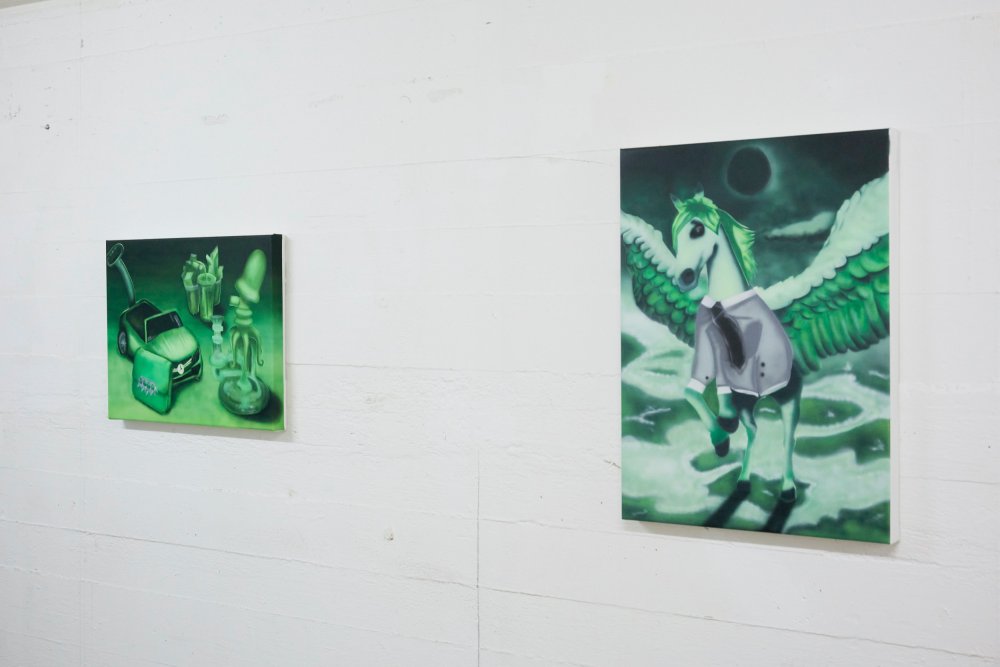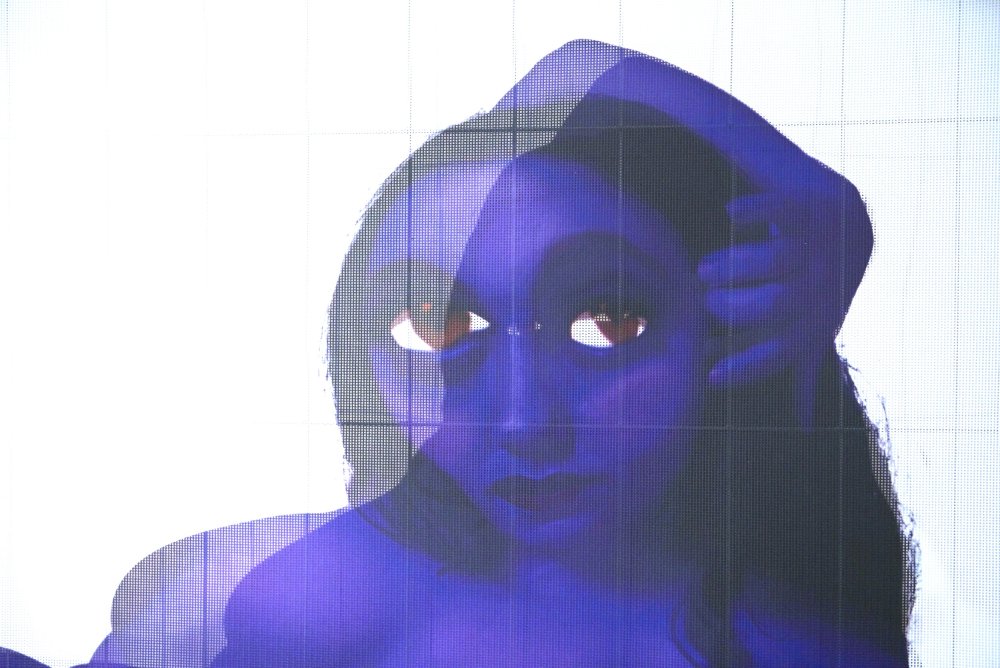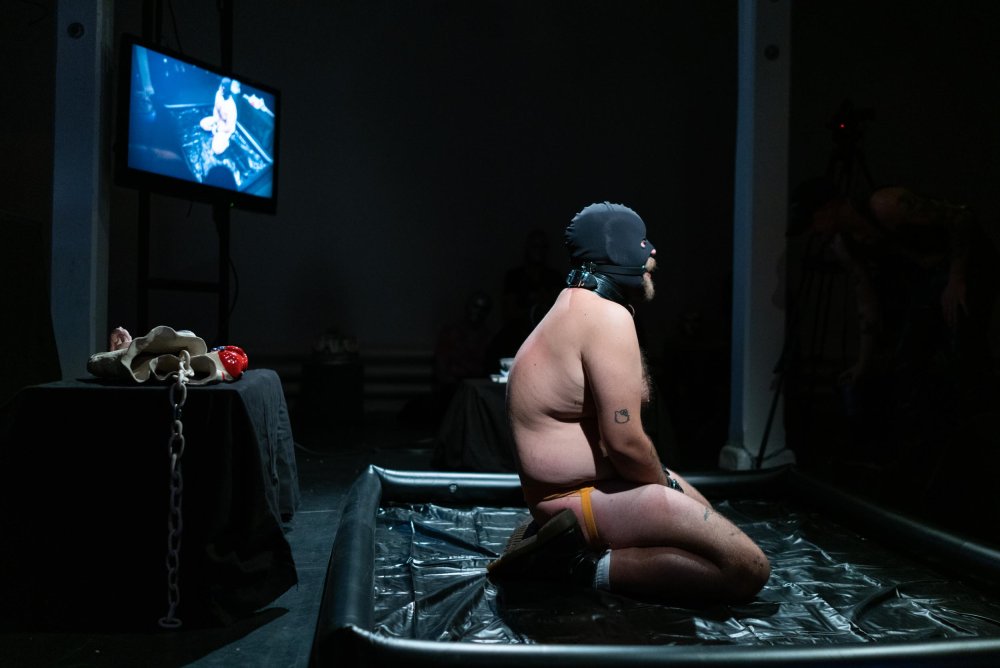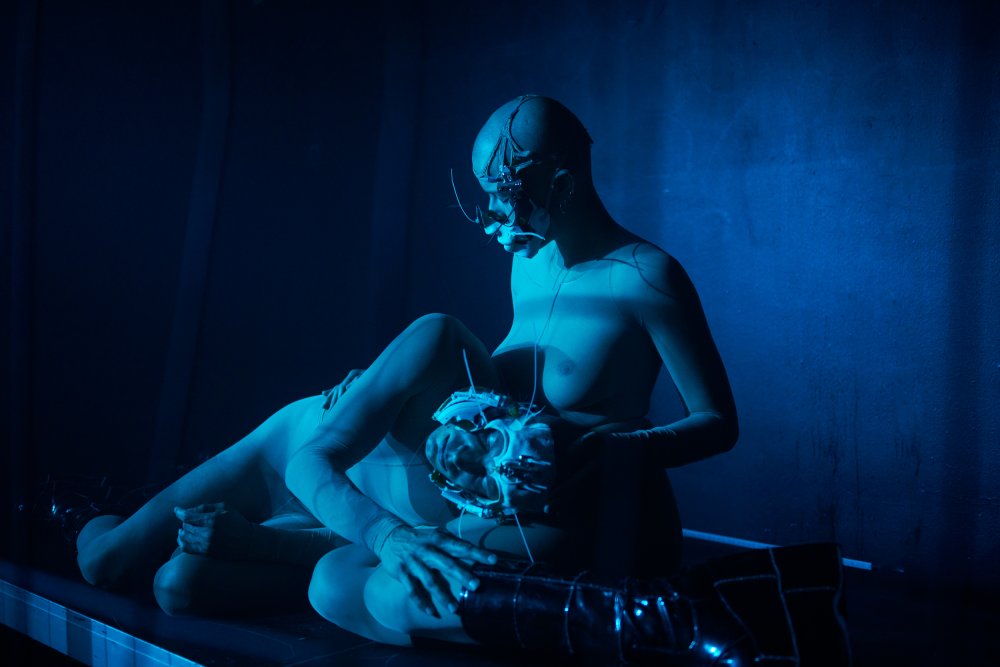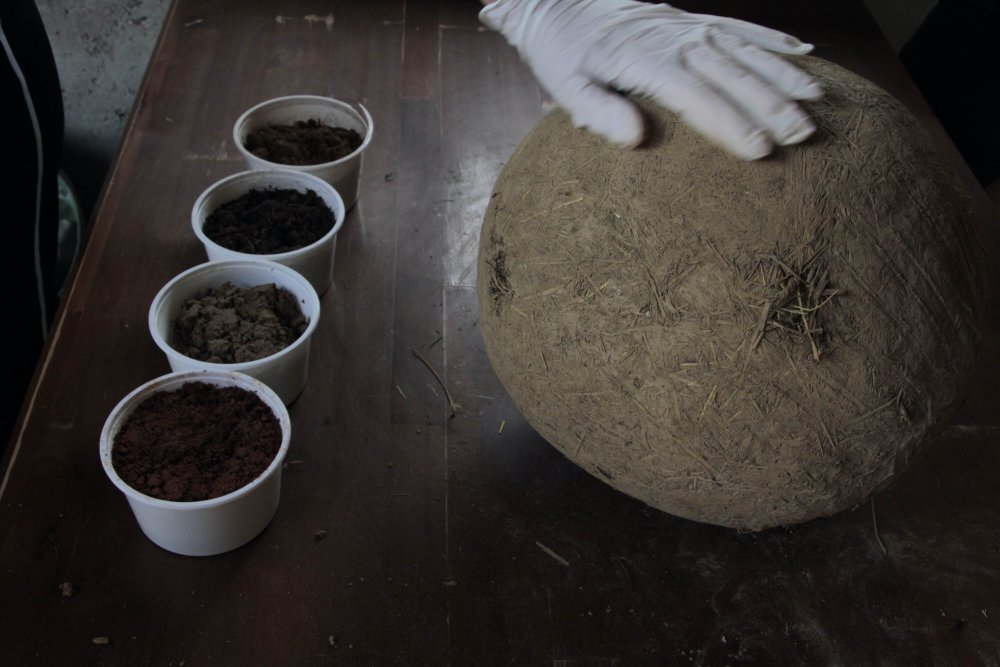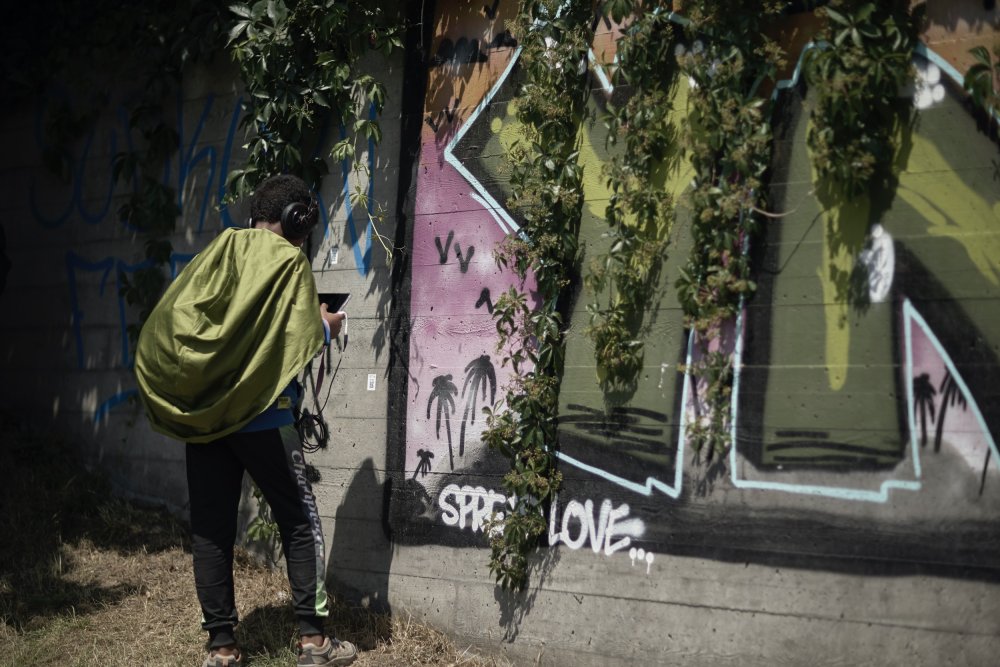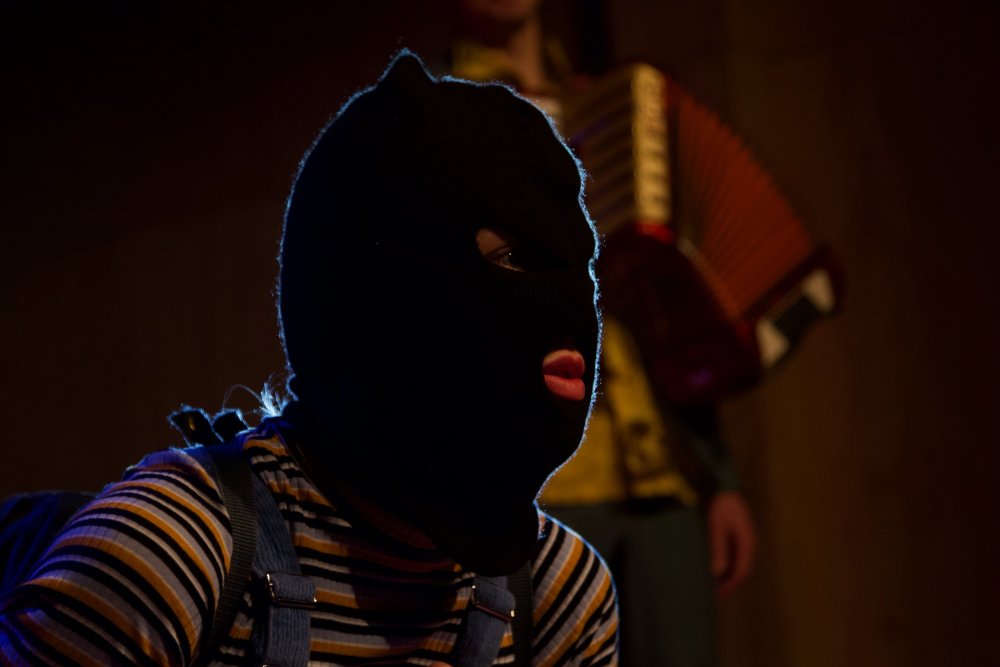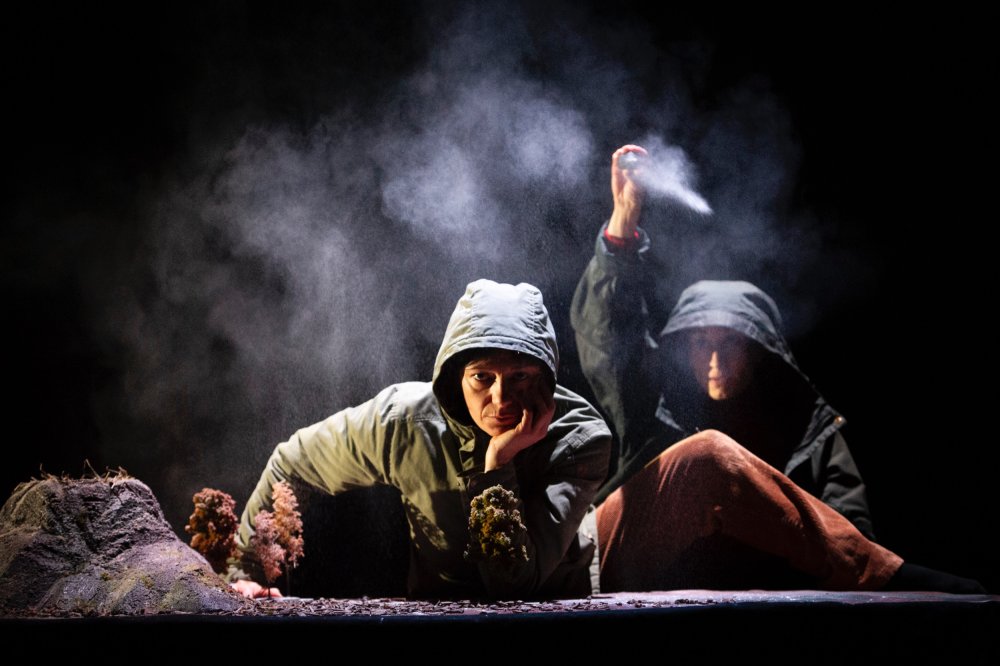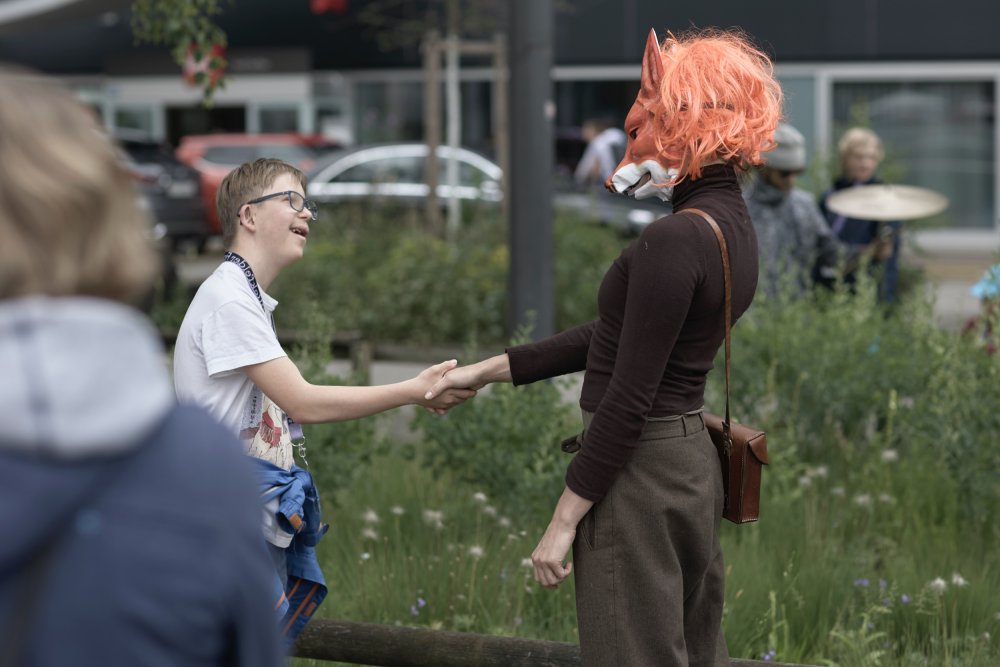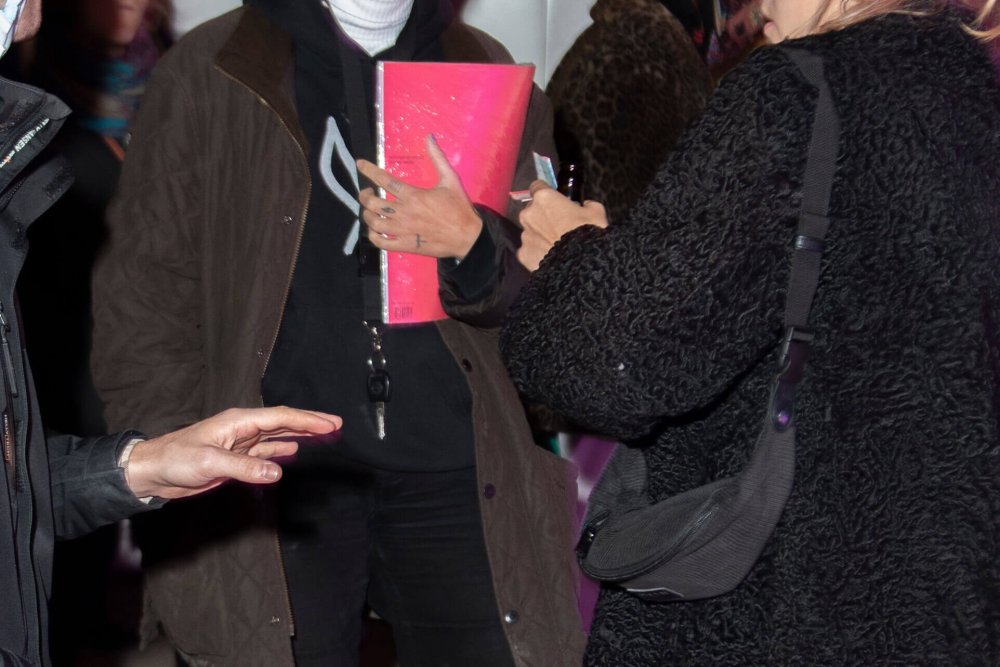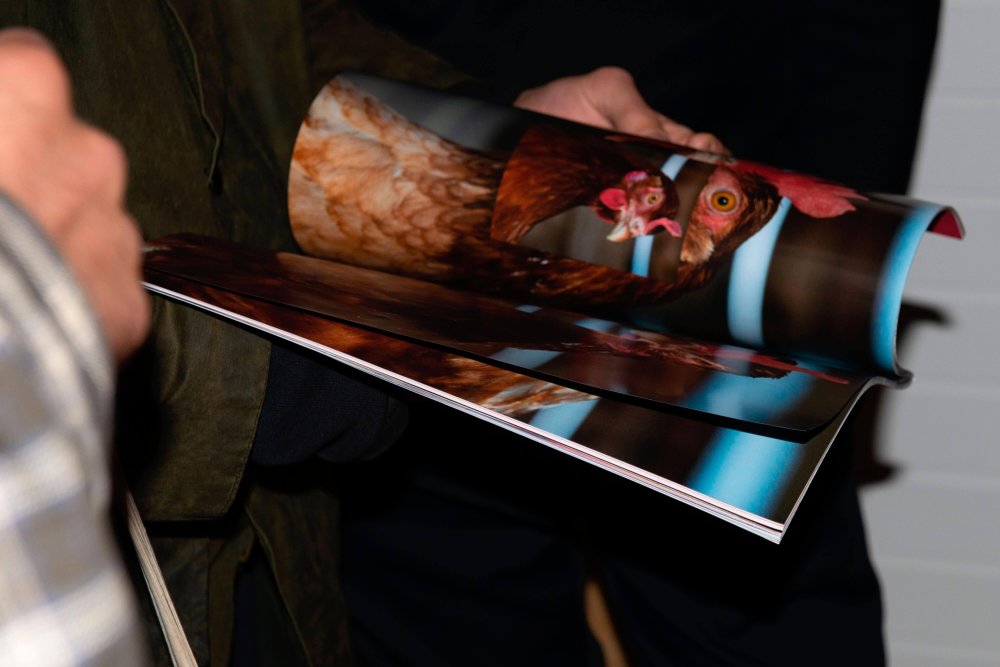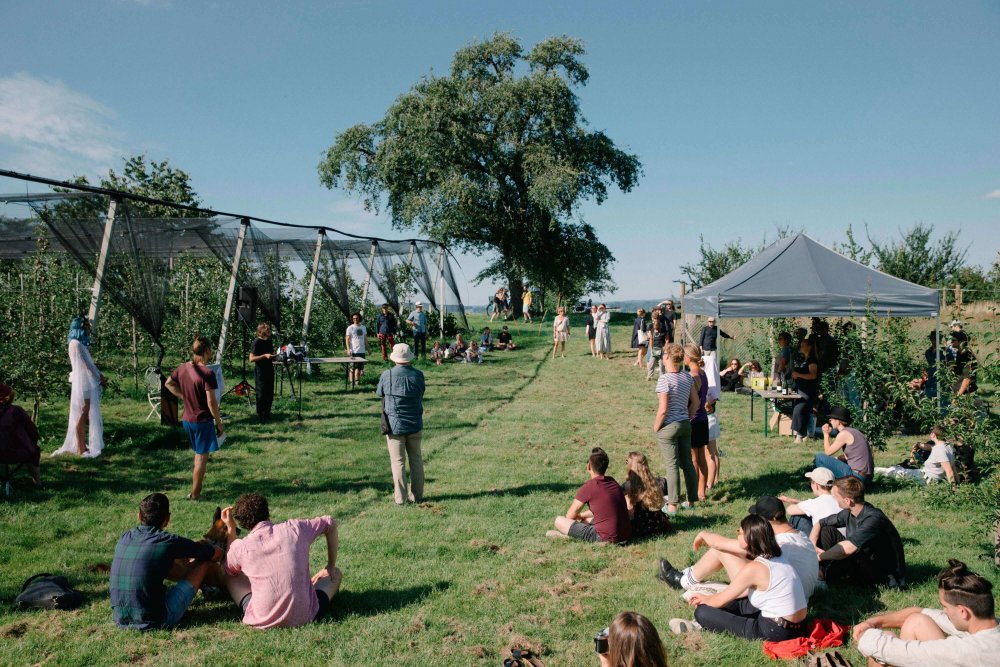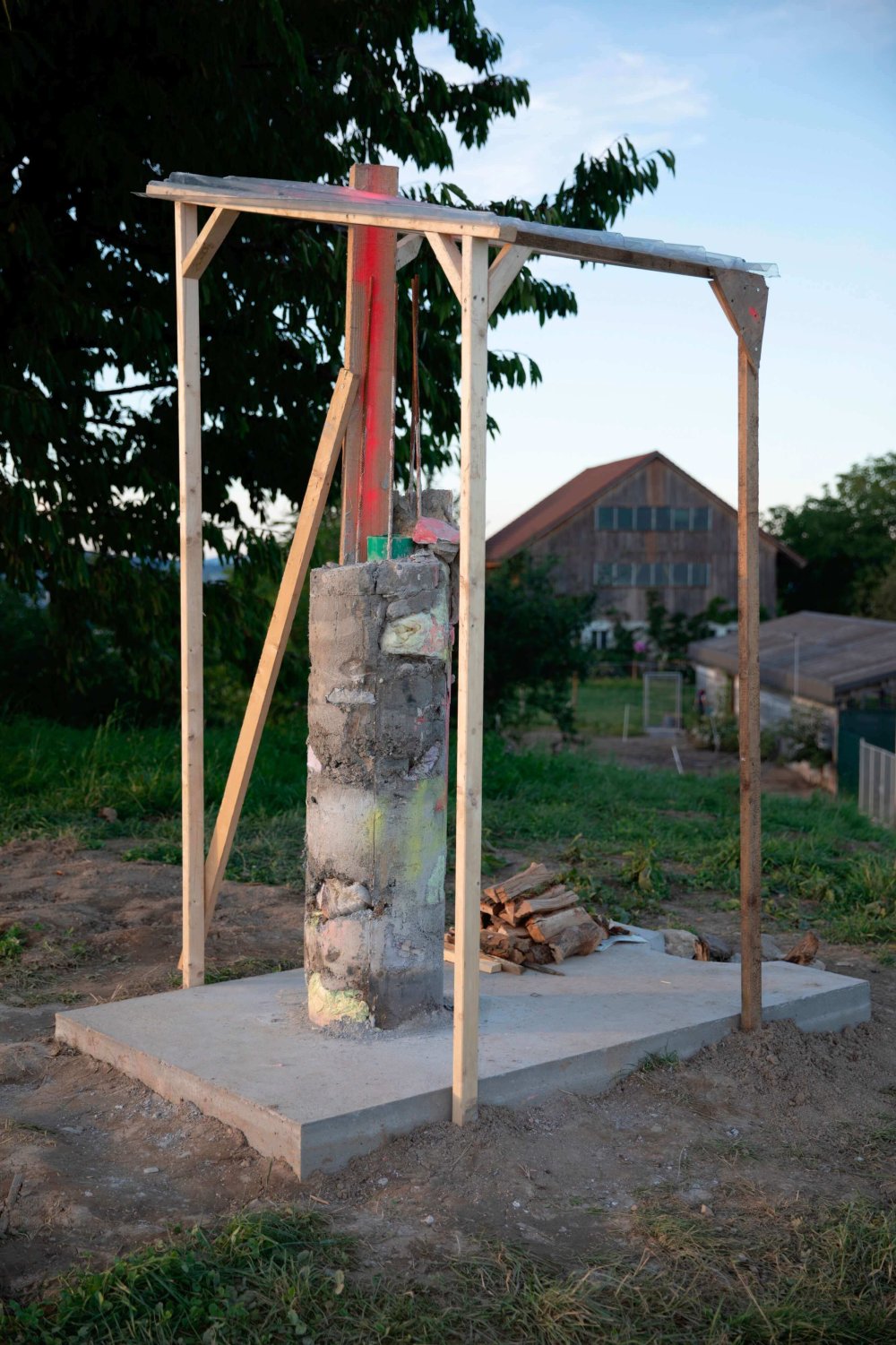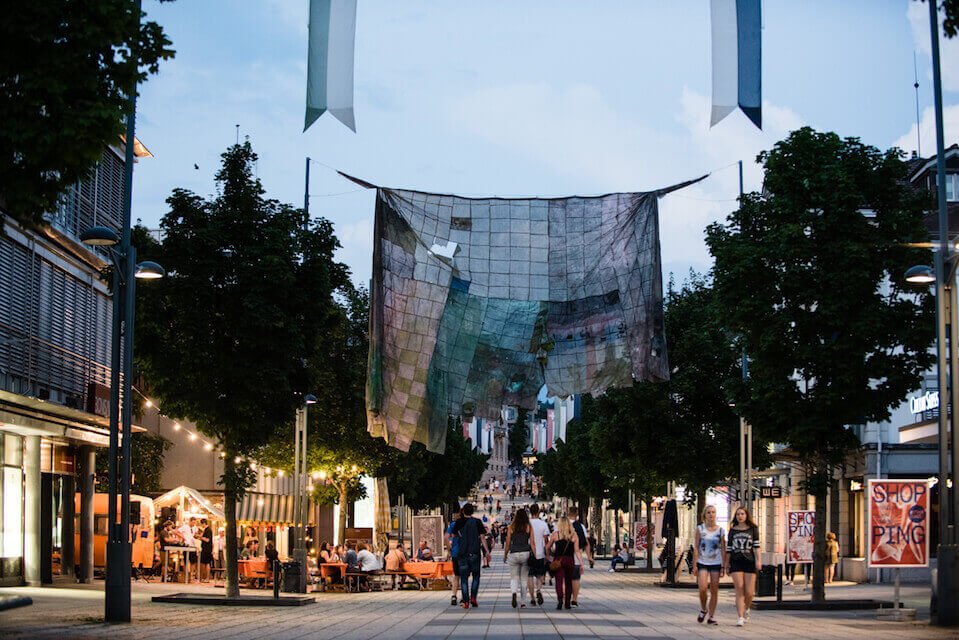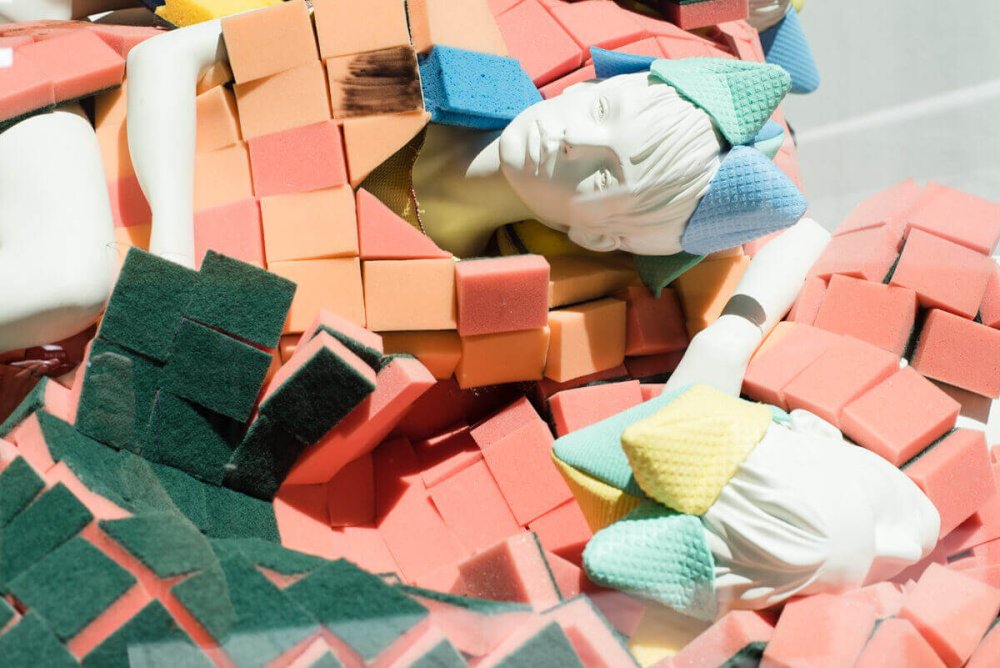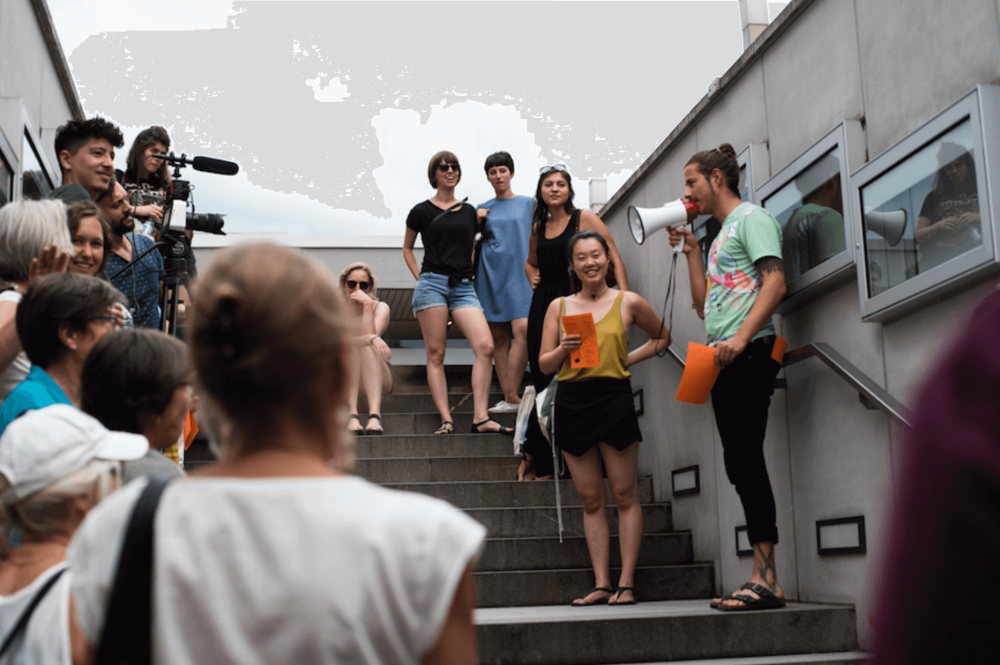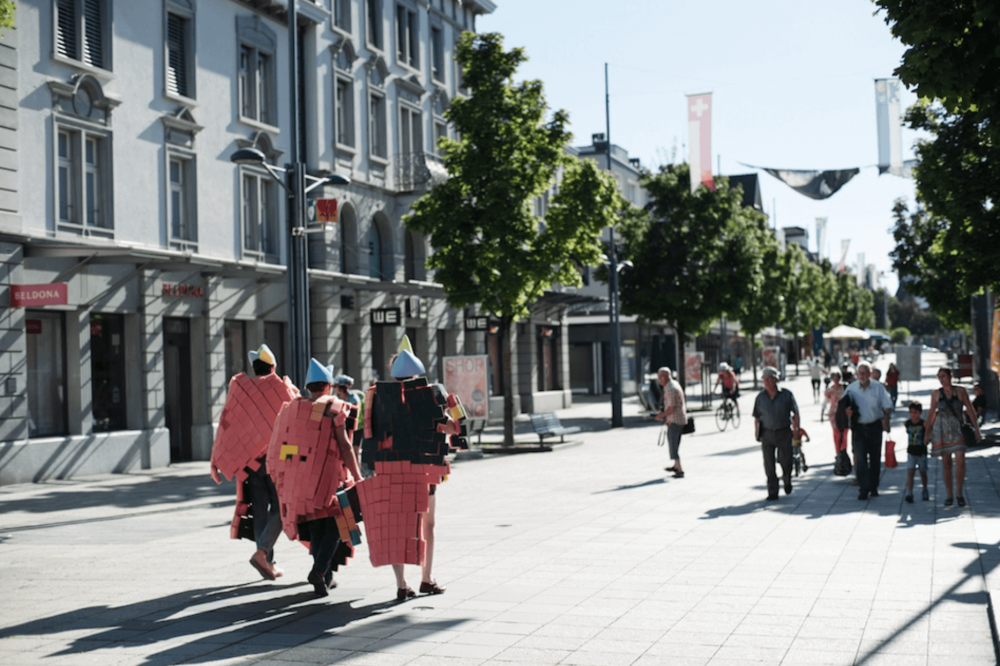Marcel Hörler is a curator and cultural mediator who lives in Zurich. He was socialized in a nuclear family of the working class, in provincial circumstances, as the white son of a florist and later housewife and a truck driver. After an apprenticeship, he dedicated himself to the study of social work with a specialization in socioculture at Universities of Applied Sciences and Arts in Lucerne and The Hague and worked for several years in various social work fields. In 2021 he completed a Master of Arts in Art Education, Curatorial Studies at the Zurich University of the Arts. Marcel is co-director/co-founder of Dogo Residenz, co-director of Blickfelder Festival, co-founder of HOX - Plattform für kritische Betrachtungen and part of the Baby Angel collective. Since 2015 he has been realizing art and culture projects.
CV
Vita
Statement
"I am interested in fundamental questions of coexistence: Who determines the rules? How can we recognise and break through dominant mechanisms and structures as part of existing systems? How can we build resistant, sustainable structures? In these interrogations of current conditions, I want to promote critical thinking, develop a terrain of polyphony and sharp the focus on marginalised experiences that move outside of cultural and social norms."
"I call my curatorial and cultural mediating practice an interstitial, social practice. Meaning that I am always interested in the qualities that lie both in the spaces in between and in the moments of exchange. Consequently, vulnerabilities and moments of failure are allowed to have their place. Self-organized, collaborative and community driven ways of working, site-specific interventions and contact zones are important scopes of action in my work."
Work
Frida
How did time feel back then? Did a second last longer in the past than it does today? Who do we listen to in order to understand what happened? And how can we put ourselves in a time when the witnesses have already fallen silent? Frida Edelmann-Knöpfel, who lived in Lichtensteig from 1864-1921, was a curious and attentive observer of her time. Counteracting the escape of time, Frida wrote down her everyday experiences in dialect, thus giving posterity the opportunity to penetrate her world of thoughts. She wrote about her mother's hardships, her relationship with her husband, her children, and life in the small town, and was thus one of the few women of her time whose writings have been handed down. As a tribute to Frida, the artists Karin Karinna Bühler, Martina Morger, Reto Müller, Lika Nüssli and Thomas Stüssi have created new works inspired by Frida's memories. The exhibition opened on 7 July 2023. The works will be displayed in the "public space" of the municipality of Lichtensteig for up to five years. Frida was curated by Marcel Hörler with the support of Maura Kressig and Jost Kirchgraber.
I'm the boss of my business, I should invoice
"I'm the boss of my business, I should invoice" is an excerpt from the lyrics of Ashnikko's song Working Bitch. In it, she discusses her sexual and financial independence. The exhibition title refers both to the precarious working conditions and to the urge for fame and success as a driving factor for independence within the art world. These two interlocking spheres stick to the floors of the exhibition spaces like chewing gum. Questions such as what can artists achieve? Is artistic work still a pleasurable activity or already a painful endurance? Or how can artistic independence still be maintained in the context of economic interests? are rarely answered in detail, and so in the end the payment slip usually remains as the last certainty of survival. For this little summer exhibition, Marcel Hörler, Mindaugas Matulis, Inés Maestre and STEVIL invited the artists Marco Siciliano, Mia Thermopolis, Steen Sperling, Aksel Bruk, Irem Güngez and Julia to show their work at Baby Angel in Zurich from 23 June to 2 July 2023.
Powerplay, Pleasure and Gain
How can we materialize joy? To what extent can we recognize and vocalize our desires and needs within power structures? How can we cultivate a practice of care while society suffers from hetero-patriarchal mechanisms? The exhibition Powerplay, Pleasure and Gain presented a mix of contributions by Giulia Essyad, Inés Maestre, Lucio Davoli, Marisabel Arias, Metehan Törer, Robin Mettler, Sarah Burger and Sicc Puppy. The exhibition took the 10th anniversary of Porny Days as an occasion to think about the potential of collectivity that lies in our bodies. Beside the exhibited works, the audience was invited to become part of the exhibition during the performative opening. Powerplay, Pleasure and Gain took place from 25th to 27th of November 2022 at Südbühne, Gessnerallee in Zürich and was curated by Marcel Hörler with the support of Lena Aurea Schneider.
Baby Angel
Urbanity and contradictions collide on the Geroldareal in Kreis 5 in the city of Zurich. On the one hand, the raw, porous, unfinished and provisional that clings to those places affected by gentrification. On the other hand, the smooth, flat, clean and closed-off, which is reflected in abundance in the windows of the financial buildings, where capital is transmitted every second. The former industrial district in Kreis 5 is changing, and so is the cellar at Geroldstrasse 31. In the building, that was built in 1882 - noted on the city map around 1900 as a petrol magazine - a collective formed in the summer of 2022 and founded the Baby Angel association. It maintains the eponymous place, which stands for art and culture in the city of Zurich, for community, sensuality and hybridity. In the characteristic spaces, various productions in the fields of music, sound, culinary, literature, visual arts, body and wellness, and performance are realized. The focus is on artistic experiments. Since fall 2022 Marcel Hörler is part of the collective, together with Melinda Bieri, David Jegerlehner, Ivana Milenković, Regula Perschak, Valentin Hehl, Valentin Müri and Robert Meyer.
Ufficio della Notte
Pleasure – the sharing of joy – affects and connects people. Although certain practices, especially those that conform to non-normative, queer, non-monogamous and non-binary lives, have always been marginalised, criminalised or at least ignored by the institutions of power. Nevertheless the figures of the night have broken the limits of society’s decency. What still remains are questions: Where and how do we talk about pleasure? Which spaces are claimed and by whom? Are safe(r) spaces only dreams of a hidden utopia? To which extent do institutions determine what is sexually allowed/not allowed? And what does all this have to do with care work? In search of answers, Ufficio della Notte presented works by Berlin Strippers Collective, Gilles Smrkovsky, Philipp Gufler, Benjamin Egger, Oz Oderbolz, Latefa Wiersch, Florian Hetz, Dario Callerame, Jeanne Jacob, Alina Kopytsa, SLOCH, Göksu Kunak and DIVAS that were shown in six different art spaces and clubs as well as in public spaces (Last Tango, Parat, Limmatplatz, Unterführung Langstrasse, Die Diele, Baby Angel, BosqueRreal, Rote Fabrik). The exhibition, curated by neo seefried and Marcel Hörler, took place from 23rd September to 15th of October 2022 in Zurich and was combined with walks, a pleasure positive party and a panel on the topic of Sexwork.
Performing Soil
We can never know what we will find – when we dig a hole... Earth is a filter, an archive, provides livelihoods, and is an arena for interspecies exchange. Interdependencies, or mutual dependencies, are intrinsic to the earth. Thus Performing Soil is dedicated to those moments of tension in this terrain that arise apart from conventional scientific methods. They assume that projects can be scaled, i.e. that they can function on a small scale as well as on a large one, but they disregard the fact that the actors can change through encounters. The idea to Performing Soil comes from the artists Silke kleine Kalvelage, Jan Georg Glöckner and the curator/cultural mediator Marcel Hörler. Over a period of three months, surrounded by a nature preserve, they collaborated with dancers, artists, craftspeople, and scientists Lisa Lee Benjamin, Marisa Mayer, Xaver Ammann, Kay Zhang, Brigham Baker, New Kyd, Reut Nahum, and Rosa Violetta Zettl to shape a massive globe. The globe was - in the context of the first exhibition at Kunstraum parat - auctioned off and together with three radio shows, the photo documentation and other small-format soil exhibits presented between 9th to 18th of December 2021 to the public.
Passagen
The exhibition Passagen was dedicated to transitions as constant companions of people. It took place from September 10 to October 2, 2021 in the church St. Jakob in Zurich. The exhibition focused on the question of how transitions can be coped, working with photography, storytelling and arrangements of personal things. The sacral building functioned as an exhibition and reflection space, as a sound body and as a place of critical questioning. The basis for Passagen was formed by several meetings of the eight protagonists Beat Schwab, Chaowei Arakawa, Emanuel Hohl, Edwin Arsenio Ramirez Garcia, Heidi Stamm, Maria Hardt, Noah Di Bettschen and Yeter Tayet, as well as individual sound recordings, which came together in an expansive audio installation. The idea and concept were developed by Marcel Hörler and Sabina Bösch, following an invitation from About Us! and the Reformed Church of Zurich. In addition, the following people were involved in the project: Julian Zehnder (audio), Maria Muster (textile), Maria Peskina (graphic design), neo seefried (text), Gilles Smrkovsky (editing). Part of the program was also an audience discussion, a sound performance between Kay Zhang, Nuriia Khasenova, Léo Collin (KIT) and Sacha Rüegg and a performance by Elischa Heller.
Seemingly Unfinished
Seemingly Unfinished shed light on the beauty of the thin line that lies between the unfinished and the finished. The Roman author Pliny the Elder had already started reflecting on the concept of the unfinishedness, in his Natural History Book 35, by pointing out that unfinished works were highly appreciated because they offered more explicit information on the artists’ creative process and techniques. The exhibition presented seven works from paintings, sculptures, installations to embroidery by Fabio Guida, Laetitia Pascalin, Patrick Ostrowsky, Pascal Sidler, Sara Lavelle, Mickry 3 and Andrea Vera Wenger and allowed to investigate the artists’ intentions and their receptions on the audience as well as discuss social, psychological and philosophical aspects with the realm of contemporary art. The exhibition was divided in three successive groups (On Transparency, Under Construction and The Absence of Painting), that allowed to focus on different ways of questioning its topic. All combined granted the audience tools to decipher the complexity of an unfinished aesthetic in completed artworks. Seemingly Unfinished took place from 12th March to 2nd April 2021 at Kulturfolger in Zürich and was curated by Marcel Hörler and Michael Almeida.
Blickfelder Festival
Blickfelder Festival presents international theatre and dance productions for a young audience and realises projects between local schools and cultural practitioners. Every other year, Blickfelder occupies a public space in the city of Zurich through a diverse cultural program and opportunities for participation. Recurring venues include Schauspielhaus Zürich, Tanzhaus Zürich, Theater Stadelhofen and GZ Buchegg. From 1992 until 2020 the department of School+Culture Zürich was responsible for the festival organization. Since then the association Festival für ein junges Publikum Zürich has taken over the lead in planning and executing the Blickfelder Festival. Since 2021 is Marcel Hörler, together with Andrea Kohler and Tanja Stauffer, in the direction of the festival.
Hox
Hox is a magazine for critical reflections on human-animal relations. Various artistic text and image contributions explore the question of what a shared future of humans and other animals should look like and what obstacles, fears and opportunities can be in this relationship. In October 2020, Hox No. 1 was published on an organic farm in the periphery of the Canton of Zurich by the publishers - Valérie Hug, Jakob Lienhard and Marcel Hörler. The magazine brings together artistic, aesthetic as well as analytical and scientific image and text contributions, combines in editorial terms call for papers and curation and sets a focus per issue. A complexly layered construct of subtopics is placed within an experimental design framework that allows the content to speak for itself. At the forefront of Hox is: the process of publishing, the process of designing, the process of understanding.
Vee
Transformations have always been part of cultural practices that fascinate and disturb at the same time. A living being that suddenly stops, apparently destroys itself and rises again as a completely new creature. From the privileged deities of the pre-Christian polytheistic religions to fantastic hybrid beings - half human, half animal - from legends, fairy tales and fantasy to complex metamorphosis images and stories in literature, the relationship between humans and animals is a frequently treated topic. In the wake of recent technological and medical advances, which make it possible to change bodies and exchange organs between humans and animals, or to breed human cells in animals, questions about a common future of humans and animals a new urgency. For the exhibition VEE (May 23rd to October 3rd, 2020) Badel/Sarbach, Benjamin Egger, Ernestyna Orlowska, Fridolin Schoch, Ina Weise and Patrick Ostrowsky made installative, sculptural and performative interventions on the agricultural farm Hof Blum in Samstagern. Performances, screenings and shows by Daniela Ehrsam, Ivy Monteiro, Maya Rochat and Soya The Cow accompanied the opening and the closing. Community, Body and Transformation were among the thematic focuses of the exhibition. Furthermore the exhibition was extended by farm talks with guests Antoine F. Goetschel, Viviane Ehrensberger, Jacques Fuchs and Hans Preisig and mimicry workshops, designed by Julia Wäckerlin and Pia Schwarz. VEE was created in collaboration with Jakob Lienhard, Valérie Hug and Martin Blum.
Plateaux Festival
Sustainability is no longer just a question of ecological circumstances such as climate change, geographical particularities or agricultural technologies but a question of production and consumption. Between April 20th and September 7th, 2019, the Plateaux Festival invited artists to discuss sustainability issues and solutions within the framework of the ecological farm Froh Ussicht in Samstagern, in the periphery of Zurich. In addition, guests were invited to take up the theme of the festival with a Carte Blanche, in order tackle curated performances, film evenings, installations and actions with unexpected ideas. The festival was designed by Marcel Hörler and Mateo Chacon-Pino. Design and code: Lydia Perrot and Lisa Li. Following an invitation by Martin Blum. The art mediation program was designed by Seline Fülscher. With artistic contributions by Artist Organizations International, Aurélie Strumans, Carina Erdmann & Anna Kindermann, Johanna Bruckner, Johanna Kotlaris, Martina Mächler, Matthew C. Wilson, Nino Baumgartner, San Keller, Simon Würsten Marin, Thomas Geiger and Yael Wicki. Guests included Bergkrautsyndikat, Kunsthaus Aussersihl, Kunst Du, Wagner & Friends with Carlos Fernández and Violeta Burckhard Razeto.
Dogo Residenz
Dogo Residenz is dedicated to artistic development, mediation and production of contemporary art. The residency was founded in 2019 and is located at the Rathaus für Kultur in Lichtensteig, St. Gallen. Dogo is organised as an art association and offers artists the opportunity to develop professionally during their stays. Artistic processes, as well as the resulting works are documented in the public online archive. Dogo organises different mediation formats such as events, open studios or discussions. A further component of Dogo is art mediation, which includes a workshops and projects with schools. The year is always rounded off with Dogo Totale, the annual exhibition in November. Dogo was initiated by Hanes Sturzenegger, Julia Wäckerlin, Marcel Hörler, Maura Kressig and Sirkka Ammann.
Juicy, Texture excellent
“The new man will finger instead of handling – or acting – and seek only play and enjoyment” is how the philosopher Byung-Chul Han succinctly describes an everyday phenomenon in the digitally networked society in his essay In the Swarm: Digital Prospects. Everything seems within reach, at the click of a finger. Digital collections should also be more acessible. The work JUICY, TEXTURE EXCELLENT applies this phenomenon to the curatorial practice. The curator's finger selects and creates a direct connection to the work by moving over the surface of work. This violates the rules of the museum and is a dilemma for the curator, as he wants nothing more than to have contact with the work. The fruit art videos by Stephanie Sarley were crucial for the idea. In her short videos on Instagram she fingers juicy fruits. Because of this, her Instagram account has been blocked by Facebook several times. JUICY, TEXTURE EXCELLENT was created in collaboration with Lydia Perrot as part of the Combining Collections module. A virtual collection exhibition led by Bruno Bruno Heller, in the Master Art Education Curatorial Studies at ZHdK.
Weiter
While the tourist takes the gondola lift to the summit and a refugee leaves his home, the digital nomad works somewhere on his boat. Never before has mobility manifested itself in so many ways as it does today. Spatial, social and virtual mobility has become the basic principle of a global and networked world. Anyone who is mobile is receptive - open to something new, perhaps better. Mobility also demands mental and physical mobility from people. On the one hand, it breaks down social structures and, on the other, reinforces the perception of existing, unequal preconditions. The broad concept of mobility was the focus of Weiter. As part of Weiter, Christian Eberhard, Collectif Chuglu, Damiano Curschellas, Gisa Frank, Lino Bally, Flurina Brügger, Iris Brodbeck, Marc Jenny, Matthias Rüegg and Robin Michel developed works en route. From September 9th to 23rd, 2017 they presented their works at three different traffic junctions in the lower, middle and upper Toggenburg. The exhibition was a co-production between Kunsthalle[n] Toggenburg and Arthur Junior.
Imagine Rhythm
Imagine Rhythm used the expressiveness of dancing and filmmaking to overcome cultural and linguistic obstacles. A group of deaf and hearing dancers from Armenia, Switzerland and Germany created a dance performance during ten days together with the choreographers Melanie Alexander and Hayk Hobosyan and showed it in public space in the city of Zurich in August 2017. Through a self-empowering approach, the dancers could create their own body movements, make use of their skills and transform it into a contemporary dance performance. The whole activity was filmed on site by a group of filmmakers in collaboration with documentary filmmaker, producer Seg Kirakossian in order to document the learning process. The project was designed also for engaging the participants in social life and giving them knowledge on how they can implement social initiatives in the future. Besides the dance workshop, a group discussion was held, with a focus on the problems and needs of people with hearing problems to promote awareness about the Convention of the Rights of Persons with Disabilities. The project was designed by Marcel Hörler and Seg Kirakossian in collaboration between Subkult and Doctor Cinema NGO.
Shopping
Catherine Xu, Samuel Koch, Nina Emge, Lucie Biloshytskyy, James Stephen Wright, Domingo Chaves, Edmée Laurin, Fridolin Schoch and Martina Mächler received six orange envelopes on 9 July 2016. Six thousand Swiss francs in thousand notes - the most valuable banknote in the world. The artists had the task of spending all the money on Obere Bahnhofstrasse, the shopping street of Wil. The works that were presented to the public from July 30th to August 13th, 2016 and were created from the purchased goods. Shopping dealt with a theme that has always moved society and the art world. We want it, we love it and we do it. From young to old. Whether conscious, ecological or wasteful. We shop, we choose and shopping should be fun, or not?! That's why the cross-media art project treated consumption as a act of life and asked questions. Questions about the commodity art, artistic work and investment in general. The artistic processes were documented and part of the exhibition, which was initiated by Arthur Junior and the City of Wil in collaboration with the graphic design studio Badesaison.
Media
Am Morgen aufstehen und krampfen für die Kunst, WOZ, 30.11.2023
Kollektives Kunstschaffen, Saiten, 16.11.2023
Es ist dringend, Genderfragen sichtbar zu machen, Herisauer Nachrichten, 18.10.2023
Mit Sexpositivität gesellschaftliche Ketten sprengen, SRF, 22.12.2022
19 Kunstschaffende zeigen, wie man den Begriff «Home» neu denken kann oder muss, arttv.ch, 18.11.2022
Die Sexindustrie ist nicht feministisch, weil unsere Gesellschaft es nicht ist, Tsüri, 29.09.2022
Dogo, Generazione Critica – Teorie pratiche nell'arte del Duemila, 23.06.2022
Die Dogos trotzen der Pandemie, Saiten Ostschweizer Kulturmagazin, 12.03.2021
Die Kunst der Verwandlung, Das Lamm, 09.09.2020
Reading Rämistrasse #11: Gianna Rovere zu VEE bei Froh Ussicht, Kunsthalle Zürich Blog, 20.08.2020
Die Kunst hockt zwischen Hühnern, kulturtipp 15/2020
Alle Kunstwerke auf einen Schlag: Nun zeigen sich die wichtigsten Resultate des Kulturvereins Dogo in Lichtensteig, Tagblatt, 13.11.2019
Druckfrische Wassermelonen, Tagesanzeiger, 29.05.2019
Schwimmende Würste sind Kunst, Tagblatt, 01.05.2019
Am Plateaux Festival werden Werte geschaffen, SRF Regionaljournal, 18.04.2019
Ein Zuhause für junge Kunstschaffende, Zett, 05.03.2019
Orangenjus von der Regionalbuspresse, Saiten Ostschweizer Kulturmagazin, 19.9.2017
Kunst mit Kommerz oder gegen ihn, Saiten Ostschweizer Kulturmagazin, 04.02.2017
Von der Baracke zum Kunstmuseum, Zentralplus, 04.03.2016
Imprint
Contact:
Marcel Hörler
Schaffhauserstrasse 121
CH-8057 Zürich
post_at_marcelhoerler.cc
@mr_jb_mh
Design, Code:
Sirkka Ammann, Jonas Huber
Privacy Policy, Creative Commons:
This site does not collect any data whatsoever. The contents of this site (texts, images) are under a Creative Commons Attribution-NonCommercial-NoDerivs 3.0 Unported (CC BY-NC-ND 3.0) license.
